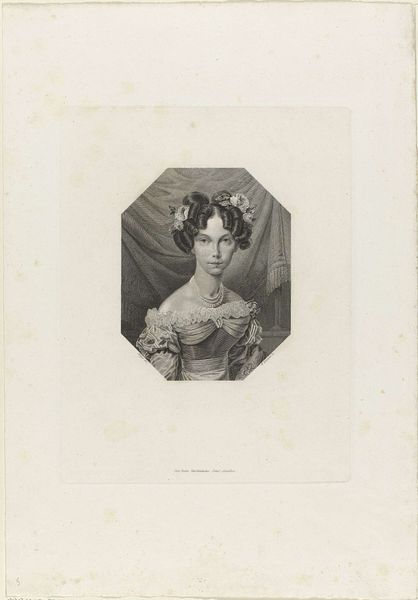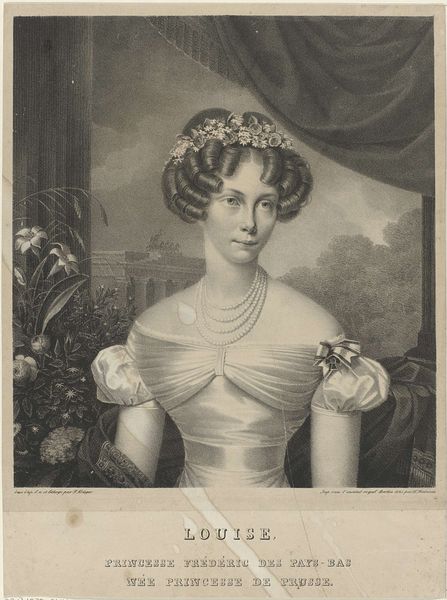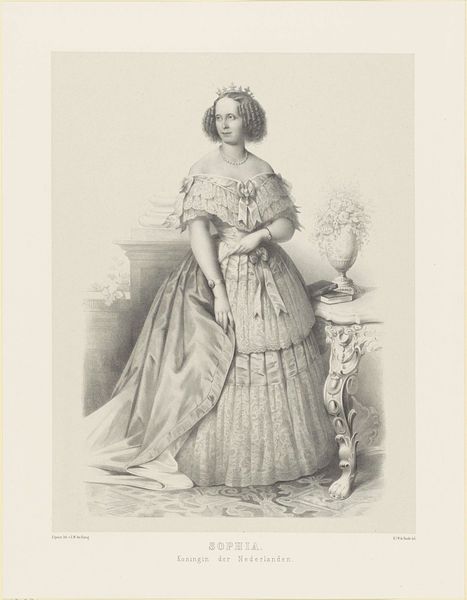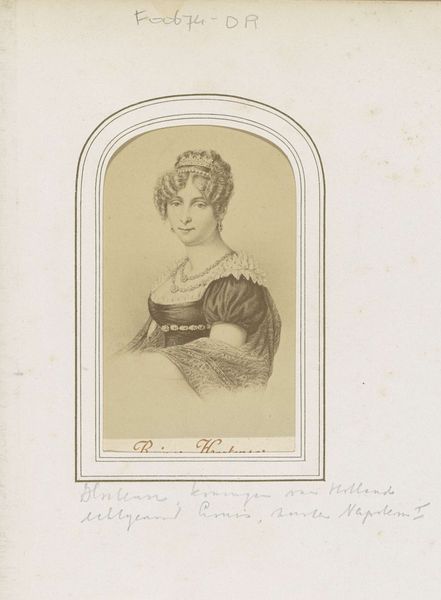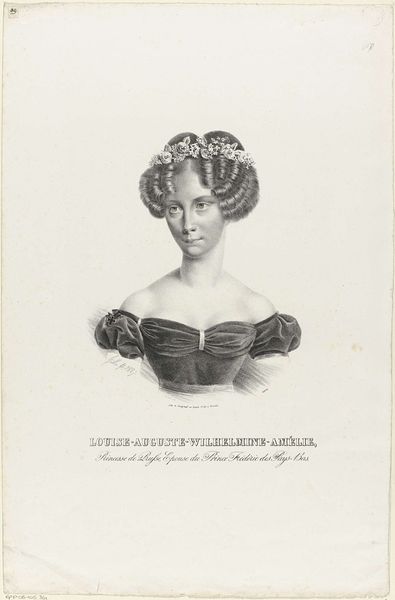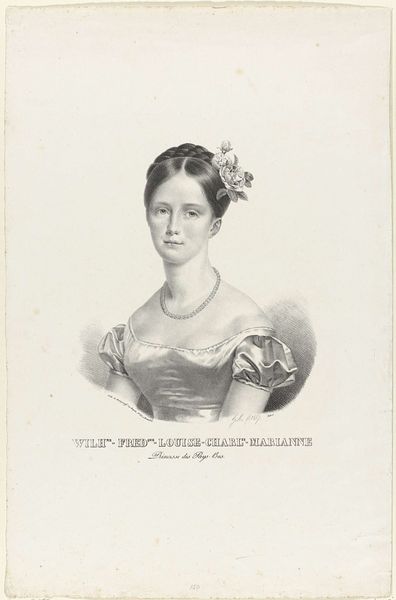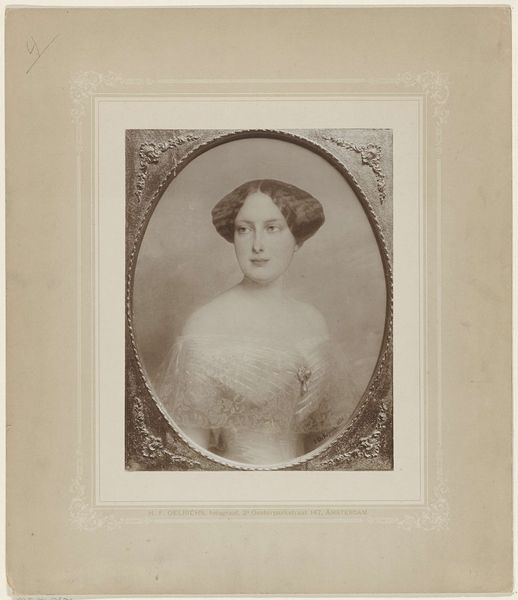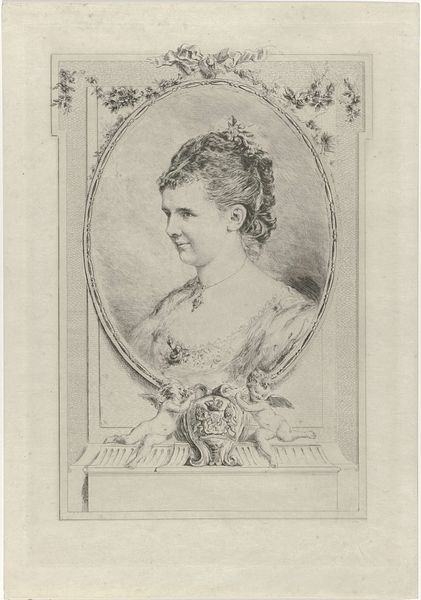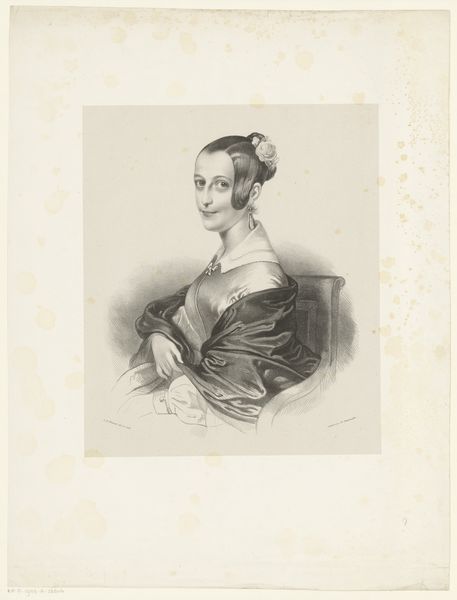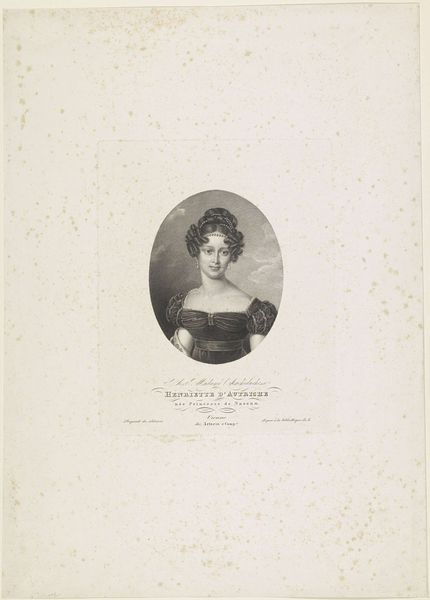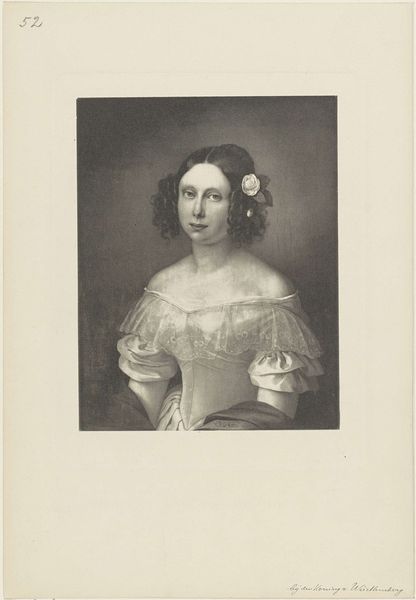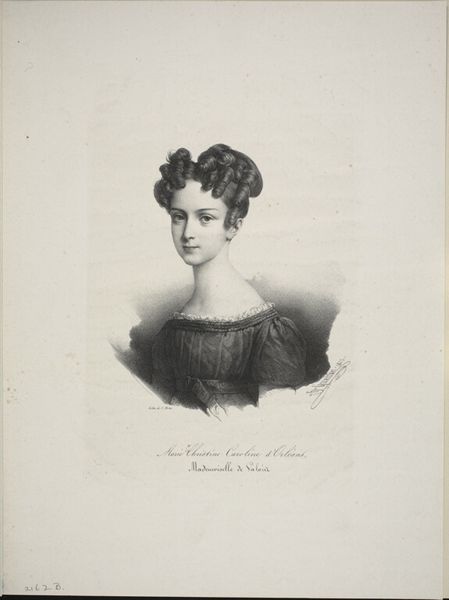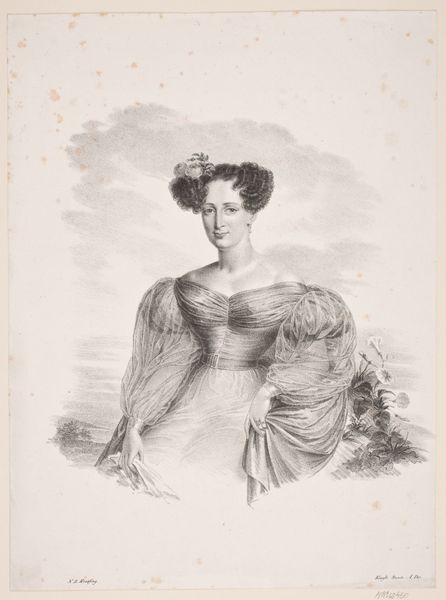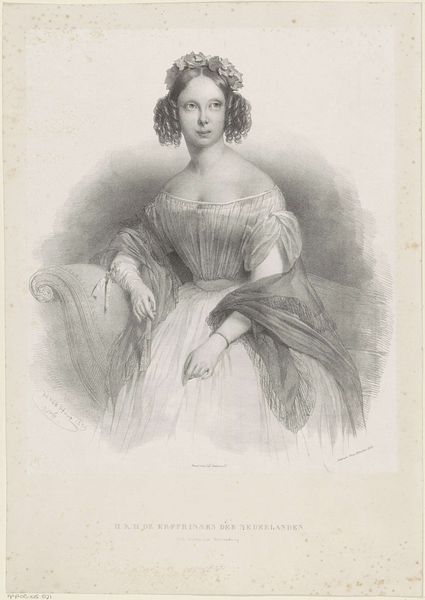
drawing, pencil
#
portrait
#
pencil drawn
#
drawing
#
pencil sketch
#
pencil drawing
#
romanticism
#
pencil
#
portrait drawing
#
academic-art
Dimensions: height 318 mm, width 240 mm
Copyright: Rijks Museum: Open Domain
Editor: This is Jean-Baptiste Madou’s "Portret van Louise van Pruisen," created sometime between 1825 and 1861. It's a pencil drawing, and the delicate shading gives it such a soft, almost ethereal quality. What draws your attention when you look at this piece? Curator: What immediately strikes me is the process involved in creating such a refined image with such a common material. Pencil, at this time, was becoming increasingly accessible thanks to industrial advancements in graphite mining and production techniques. To then see it used, in this manner, elevates it beyond a simple sketching tool, wouldn’t you agree? It questions the separation of ‘high’ art forms, like painting, from what might be considered a more pedestrian medium. Editor: I see what you mean. I hadn't really thought about pencil as being particularly accessible. Curator: And who exactly was purchasing these pencils? How did they find their way into the hands of artists like Madou, and what socio-economic class did these artists represent? Further, how did the rise of industrialization and consumer culture influence the demand and market for portraiture? We can consider how this particular portrait, rendered in a mass-produced material, contributes to a broader discussion about labor and artistry during this period. Editor: So, it’s not just about the image, but also about how readily available pencils had become and who could afford them and the social shifts in how it's produced. Curator: Exactly. Consider also the mass production of printed images facilitated by advancements in printing technology, how did this trend intersect with and possibly undermine traditional patronage systems for portraiture? Examining the means of production really illuminates a broader social context, doesn't it? Editor: That makes me see the drawing in a totally new way. I never considered the implications of using pencil, or thinking of pencils in terms of mass production. It makes you wonder about the story *behind* the art. Curator: Absolutely, by delving into the materials and means of production, we unlock new avenues of interpreting art's relationship to society.
Comments
No comments
Be the first to comment and join the conversation on the ultimate creative platform.
